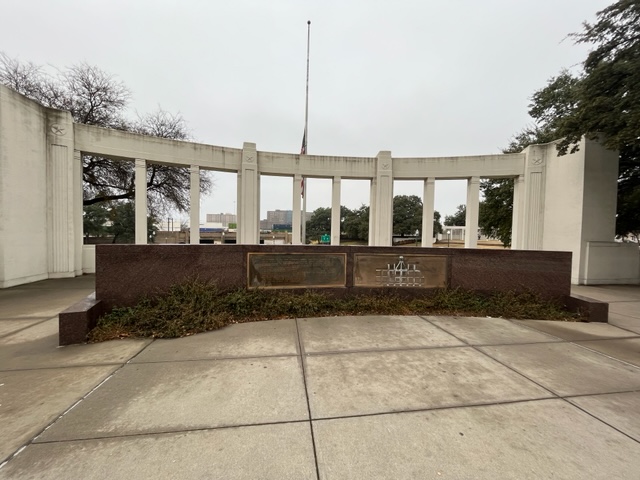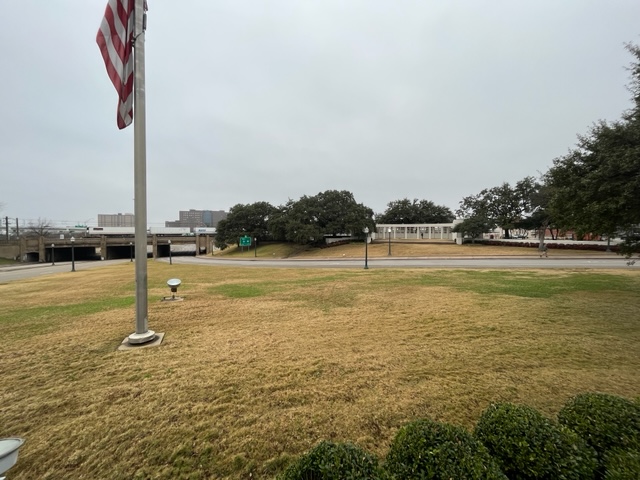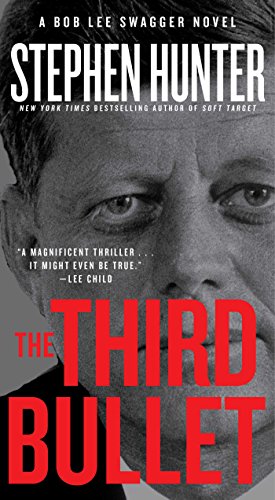If you are of a certain age you know exactly where you were on November 22, 1963. In my case, I was in Mrs. Rimpson’s first grade class at what was then named Park Street School in Asheboro, North Carolina. I still vaguely remember the teachers leaving the classrooms to congregate in the hall to discuss something of importance. We later learned that President John Kennedy had been assassinated in Dallas.
I spent a good part of last week in Dallas attending the Dallas Safari Club Convention. Looking out from my hotel room I saw a plaza and a six story brick building about a block and a half away. Then it hit me that this was Dealey Plaza and the building was the Texas School Book Depository. Before I left on Sunday I took some time to walk around the plaza and take a few pictures.
Dealey Plaza has two colonnades which are bisected by Main Street. The left colonnade has a statue of George Dealey who was the publisher of the Dallas Morning News and for whom the plaza is named. The right colonnade shown below is dedicated to the late President Kennedy. You can see the American flag in the background which is perpetually at half staff.

The map displayed below shows the layout of Dealey Plaza. The Kennedy motorcade approached the plaza on Main Street and then took a right turn on to Houston Street. Then it took a final hard left turn on Elm Street on which the Book Depository fronts.

This is behind the colonnade looking across to Elm Street and the infamous “Grassy Knoll”. It is infamous as many witnesses said they heard gun shots coming from there.

This is the Texas School Book Depository. There is now a museum in it.
The sixth floor window from which Lee Harvey Oswald shot is the square window on the far right. Why Oswald didn’t take the shot as the car turned on to Elm from Houston when it was almost stopped will never be known.
One thing that strikes a visitor to the location is that the distances involved are much smaller than the impression given by the many TV shows and films on the assassination.

The is what was named the Dal-Tex Building. The name stood for Dallas Textiles as it held offices for many small clothing wholesalers and manufacturers. New owners now have renamed it to 501 Elm Place. This building has figured in a number conspiracy theories on the assassination as the location of an alternative sniper.

One of the best examinations of the assassination in my opinion from a shooter’s perspective is actually a novel. The Third Bullet by Stephen Hunter features his sniper protagonist Bob Lee Swagger. He is asked by a widow to investigate it as her late husband was murdered while working on a book about the assassination.
I read the book when it came out and just re-read it after getting home from Dallas. Having actually visited Dealey Plaza and walked the plaza, this made parts of the book come alive. If you have any interest in the Kennedy Assassination I highly recommend it. You can find the Kindle version here. Note, I do earn a commission on it.

